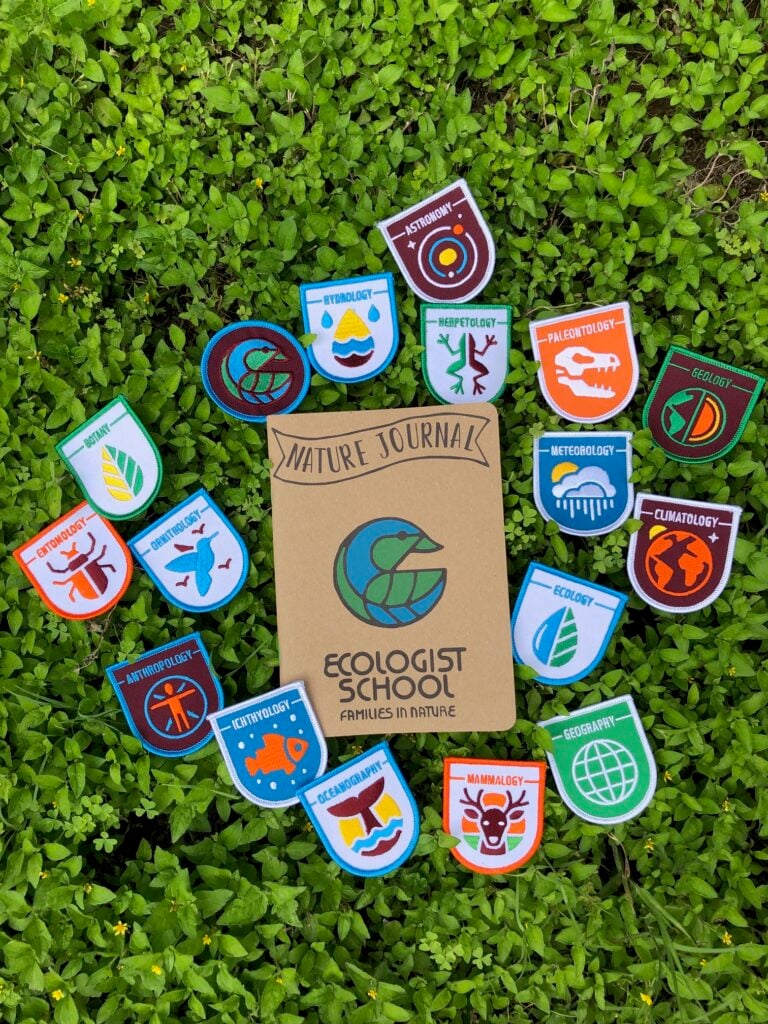Choose Learning Type ▼



Badges can be earned through hands-on experiences within each of the 16 branches of science, or “Science Slices.” You can earn a badge in each branch of science by doing four activities in these categories. We also encourage participants to keep a Nature Journal to record their memories, and to express themselves creatively through writing or drawing after each activity. We recommend that each child (and parent if they’d like) write or draw in a journal after each activity, with expectations of your children that match their age (the goal is self-expression, not perfection).
The Ecologist School Web Guide: Davila Elementary Edition
Davila Elementary – SPARK Edition is a collaborative project between Families in Nature, SPARK School Park Program and Davila Elementary to help our community learn more about their school campus while getting outside into nature together! This booklet has 64 lessons across 16 different branches of science to help you play, learn and volunteer in the park as a family!
Each branch of science corresponds with a matching badge featured in the top right corner of every activity. Complete all 4 activities in a science slice and you are eligible to earn that badge. Click above to order your own Ecologist School badges!
Circle of Sciences
Our hands-on activities span across 16 different branches of science! Each Science Slice is broken into 8 learning categories: S.T.E.A.M., Volunteerism, Outdoor Skills and Leadership Development. Our activities are designed to be enjoyed by all ages.
It is our vision to inspire all families to fall in love with nature and foster the next generation of conservationists. Becoming a member of Families in Nature will give your family the opportunity to have adventures in nature, experience field science, develop as youth conservation leaders, and make memories that will last a lifetime. Memberships are free for everyone.
SPARK’s mission is to work with public schools to develop their playgrounds into community parks. SPARK has built 200+ community parks in 17 different school districts throughout the Houston area. Each park is designed based on ideas and needs of the school and surrounding neighborhoods. While all of the parks are different, a typical park consists of modular playground equipment, a walking trail, benches, picnic tables, trees, an outdoor classroom, and a public art component.

Complete any 4 activities in a science category and you’ll be eligible to purchase a badge and show off your achievement.